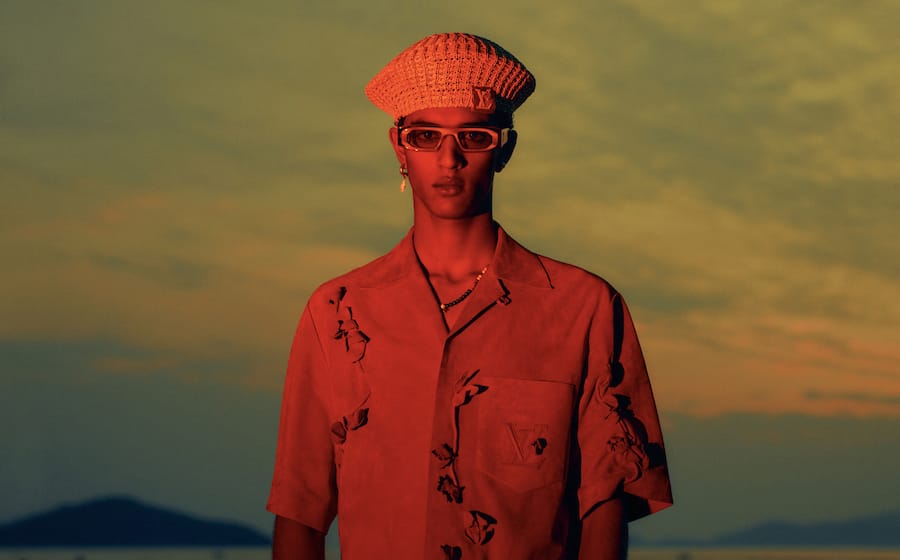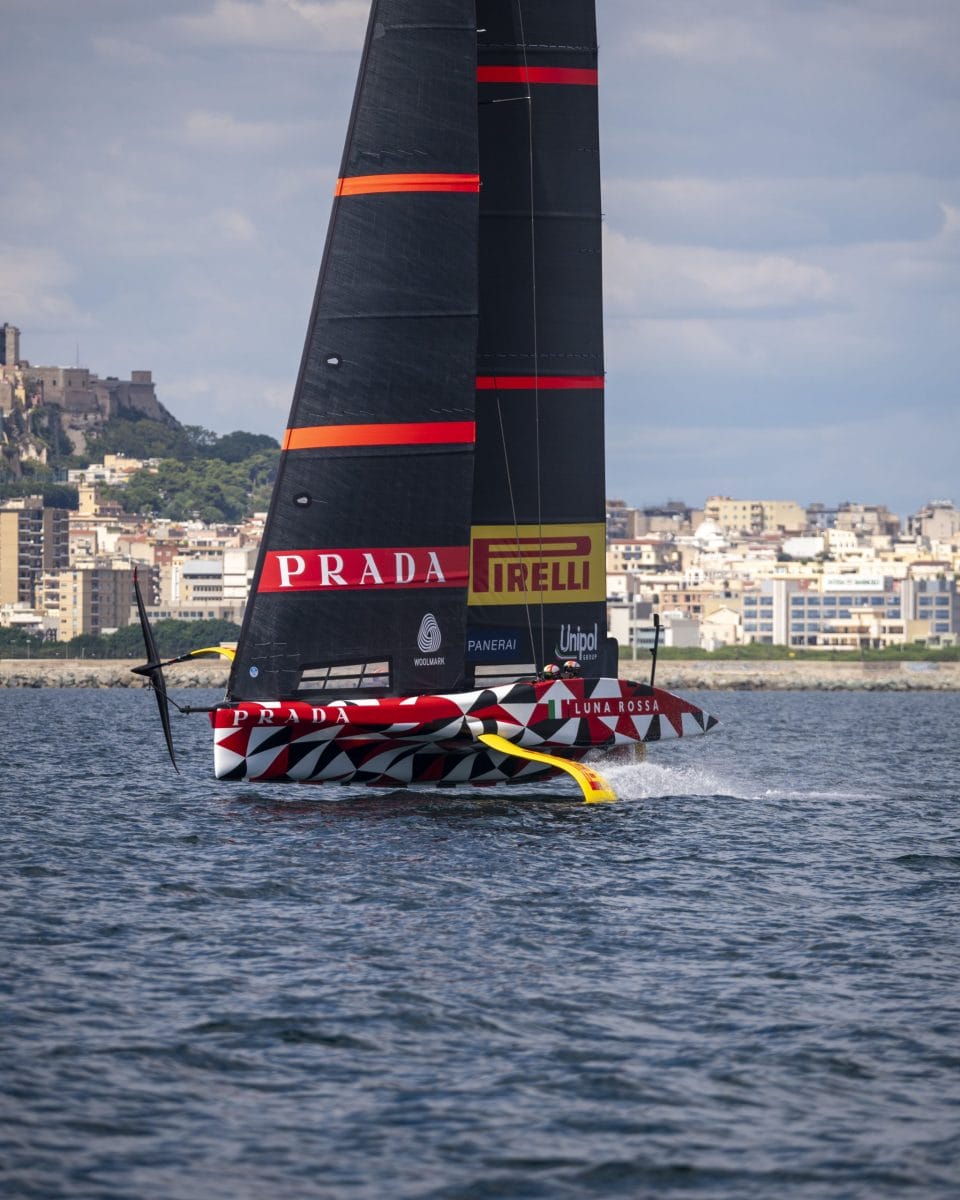 When racing across the open water at speeds closing in on 50 knots (just under 100km/h), you feel the crest of every wave as your vessel tries to cut through them. The sea responds to such aggressive moves by literally trying to shake you off. By you, we mean to say anyone aboard the offending speedboat; if you are not strapped into a seat or holding on for dear life, you will be lifted off your feet and dumped overboard. Holding on is exactly what I am doing as the Luna Rossa speedboat we are aboard attempts to demonstrate the speeds that the Luna Rossa foiling monohull achieves.
When racing across the open water at speeds closing in on 50 knots (just under 100km/h), you feel the crest of every wave as your vessel tries to cut through them. The sea responds to such aggressive moves by literally trying to shake you off. By you, we mean to say anyone aboard the offending speedboat; if you are not strapped into a seat or holding on for dear life, you will be lifted off your feet and dumped overboard. Holding on is exactly what I am doing as the Luna Rossa speedboat we are aboard attempts to demonstrate the speeds that the Luna Rossa foiling monohull achieves.
Of course, the Luna Rossa Prada Pirelli team shares that experiencing fear-inducing speeds on a powered vessel cannot compare with what it feels like to sail aboard a foiling monohull. For one thing, even at the speeds we manage here off the coast of Cagliari, Italy, we would still be trailing behind the AC75 racing yacht that Luna Rossa will be fielding in the 37th America’s Cup 2024. Yes, speedboats can be outpaced by five-tonne sailing yachts, and — for some context — that is like saying a mechanical watch could be more precise than a quartz watch. This, of course, is a segue because we are here at the Luna Rossa Base in Sardinia at the invitation of Panerai — the Swiss-made Italian watch brand is an official Luna Rossa sponsor.
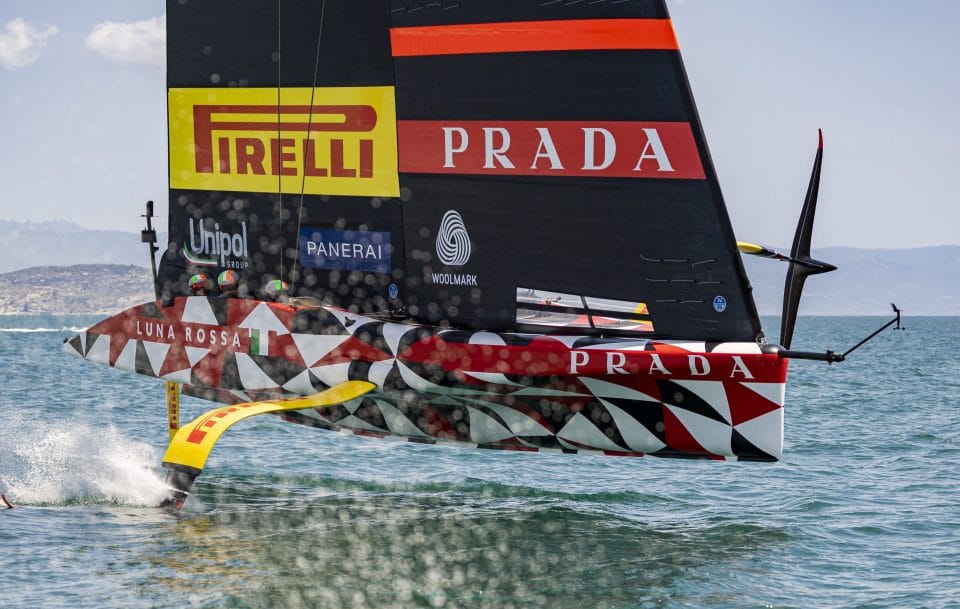 Now, before you go accusing us of having too much Franciacorta — not to mince words about it — besides having our brains baked by the Sardinian sun, you should know that the AC75 monohulls have been known to achieve speeds in excess of 50 knots. Google it. In any case, the America’s Cup represents peak sailing, both from the perspective of sailing the monohulls and engineering them. The legendary regatta is the Formula 1 of the sailing world and has been since before the motorcar was even a gleam in Karl Benz’s eye. Like the development of the automobile, the America’s Cup has quite a rich narrative, so we give it its own section. While the contemporary reality of sailing is far removed from its roots, some context is still useful. Just so you know, the America’s Cup is the world’s oldest sporting competition of any kind, with the first in 1851.
Now, before you go accusing us of having too much Franciacorta — not to mince words about it — besides having our brains baked by the Sardinian sun, you should know that the AC75 monohulls have been known to achieve speeds in excess of 50 knots. Google it. In any case, the America’s Cup represents peak sailing, both from the perspective of sailing the monohulls and engineering them. The legendary regatta is the Formula 1 of the sailing world and has been since before the motorcar was even a gleam in Karl Benz’s eye. Like the development of the automobile, the America’s Cup has quite a rich narrative, so we give it its own section. While the contemporary reality of sailing is far removed from its roots, some context is still useful. Just so you know, the America’s Cup is the world’s oldest sporting competition of any kind, with the first in 1851.
If you are in the mood to have your mind boggled by some sailing yacht facts, here is the low-down on the standard monohull hydrofoil that will be used in the coming America’s Cup. The AC75 (or America’s Cup 75 footer) is the basis of the prototype Luna Rossa uses, but more on that in due course. It helps first to know what in the world a hydrofoil monohull sailing yacht is and how it manages to glide above the waves. The simple answer is that there are wings called hydrofoils attached to the hull — left and right — which do what wings normally do. The tips or ends of these two wings and a rudder are the only elements in contact with the water when the yacht is at speed, making it look for all the world like it is flying across the waves. Such a vessel should easily move at twice the prevailing wind speed and might even go faster. This is difficult to grasp because the yacht is wind-powered, after all, but it is what happens. For a more technical description, here is what we have been able to glean from official sources: the aforementioned wings are canting ballasted T-wing hydrofoils mounted on the port and starboard topside longitudinal drums; there is a centerline T-wing rudder, and no keel (source: Wikipedia).
 All of the above is standard, but the America’s Cup race did not start using the hydrofoil design until 2017, and the monohull variant dates from just two years ago (2021). Team Luna Rossa itself is working on a prototype, LEQ 12, with the following publicly declared specifications:
All of the above is standard, but the America’s Cup race did not start using the hydrofoil design until 2017, and the monohull variant dates from just two years ago (2021). Team Luna Rossa itself is working on a prototype, LEQ 12, with the following publicly declared specifications:
HULL LENGTH <12m
MAST HEIGHT +/- 18 m
WEIGHT (UNSCREWED) 2.1 tonnes
CREW 4+2
TOP SPEED 45+ knots
This puts the LEQ 12 at an apparent disadvantage as far as top speeds go because the AC75 has been clocked at speeds beyond 50 knots. Of course, that is straight-line speed, and the thing about sailing boats is how they turn. Again, perhaps counterintuitively, sailing vessels can and do sail into the wind and have been doing so since some clever sailor somewhere figured out how to angle the sails just right. On that note, the Luna Rossa team considers itself pretty clever, too, since it opted to create its boat from scratch to challenge team New Zealand, the defender of the America’s Cup. The 10,000 sqm Cagliari base camp is where Luna Rossa is doing most of its development work, which is not inconsiderable; there is also a 4,000 sqm site in Barcelona, Spain, which is where the AC75 Challenger Selection Series begins next year. In fact, Luna Rossa was one of the teams that developed the aforementioned AC75 foiling monohull standard.
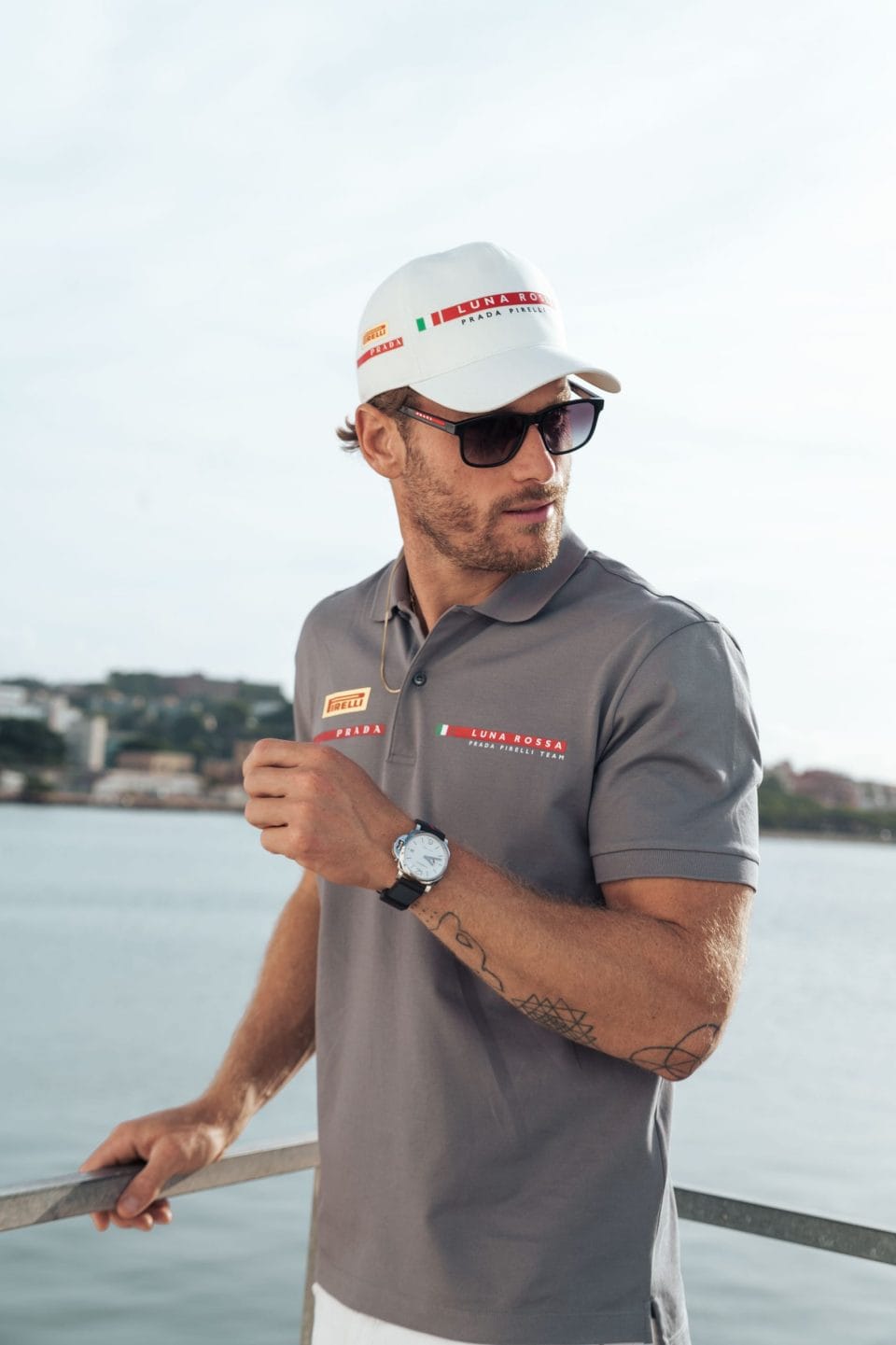 Just as Formula 1 is an expensive sport, so too is the business of the America’s Cup — with estimates on operating the teams running up to US$200 million for each competitive run. This is evident in the Luna Rossa base camp, where there are at least two simulators, two prototypes (a slightly scaled-down model that we saw and another full-size model that takes to the waves), in-house manufacturing capabilities and engineers and technicians of many stripes all working together to develop the LEQ 12 that will eventually be the Luna Rossa racing yacht. There are approximately 118 people on the distinctly Italian team, including skipper and team director Max Sirena, and Circolo Della Vela Sicilia president Patrizio Bertelli. It breaks down as follows:
Just as Formula 1 is an expensive sport, so too is the business of the America’s Cup — with estimates on operating the teams running up to US$200 million for each competitive run. This is evident in the Luna Rossa base camp, where there are at least two simulators, two prototypes (a slightly scaled-down model that we saw and another full-size model that takes to the waves), in-house manufacturing capabilities and engineers and technicians of many stripes all working together to develop the LEQ 12 that will eventually be the Luna Rossa racing yacht. There are approximately 118 people on the distinctly Italian team, including skipper and team director Max Sirena, and Circolo Della Vela Sicilia president Patrizio Bertelli. It breaks down as follows:
SAILING TEAM 24
SHORE team 34
COMMUNICATIONS / PUBLIC RELATIONS 5 SERVICES / ADMINISTRATION 17
DESIGN TEAM 34
One quick way to understand team Luna Rossa Prada Pirelli is to look at the tale in terms of figures. Here is what the fact sheet says about the team:
AMERICA’S CUP PARTICIPATION (INCLUDING THE COMING SEASON): 6 (2000, 2003, 2007, 2013, 2021, 2024)
APPEARANCES AT CHALLENGER SELECTION SERIES FINALS: 4 (2000, 2007, 2013, 2021)
CHALLENGER SELECTION SERIES WON: 2 (2000 LOUIS VUITTON CUP; 2021 PRADA CUP)
CHALLENGER OF RECORD SUCCESS: 2 (2003, 2021)
OVERALL AMERICA’S CUP YACHTS BUILT SINCE 1997: 9
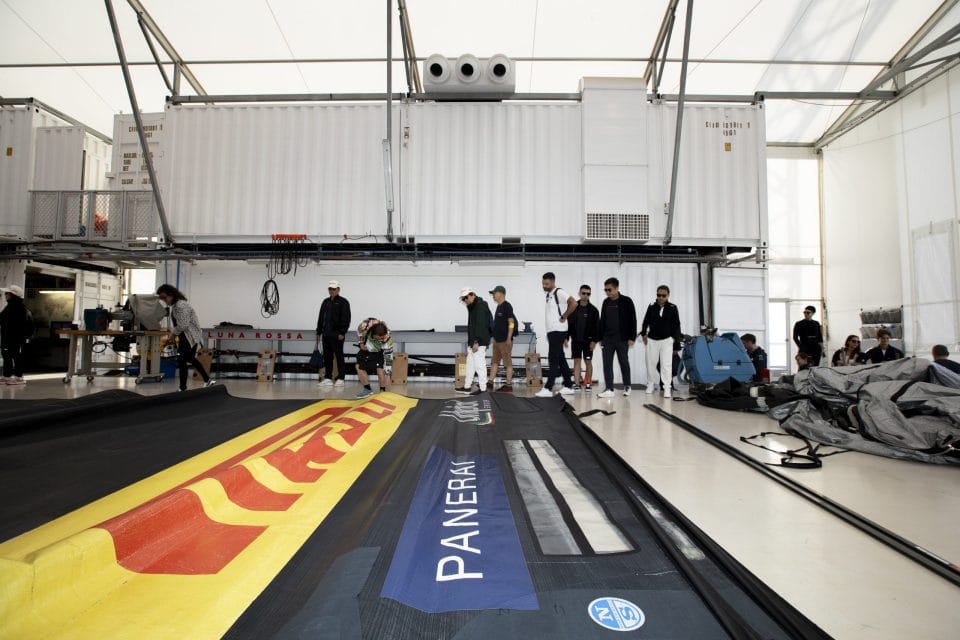 If there is one Panerai watch that embodies the story here, it must be the Submersible Luna Rossa PAM01039. Panerai chief marketing officer Alessandro Ficarelli explains: “(The watch) stands out due to its use of innovative materials like Carbotech (a specially developed material used by the brand), representing the brand’s adventurous spirit and its watchmaking expertise. Moreover, its aesthetic intertwines sporty resilience with elegance — including details like the incorporation of actual sail material, which symbolises a forward-thinking vision that aligns with Panerai’s maritime legacy and its future aspirations.”
If there is one Panerai watch that embodies the story here, it must be the Submersible Luna Rossa PAM01039. Panerai chief marketing officer Alessandro Ficarelli explains: “(The watch) stands out due to its use of innovative materials like Carbotech (a specially developed material used by the brand), representing the brand’s adventurous spirit and its watchmaking expertise. Moreover, its aesthetic intertwines sporty resilience with elegance — including details like the incorporation of actual sail material, which symbolises a forward-thinking vision that aligns with Panerai’s maritime legacy and its future aspirations.”
Those aspirations are on show on this visit to Sardinia, which was part of Panerai’s now-famous experiences. The Luna Rossa vessel itself might be a very expensive, closely-held secret that amateurs have no business messing with, but there are all manner of maritime activities that can be associated with the competitive team’s preparations. Popular on this particular occasion was water skiing, but Panerai also went the distance with a surfing experience with the brand’s ambassador, surfing champion Leonardo Fioravanti. Of course, everything will pay off nicely for Panerai should Luna Rossa be on top form during the America’s Cup. First though, whether the Luna Rossa team will become the Challenger of Record in 2024 will be determined when the season begins in Barcelona.
Once you are done with this story about Panerai and Team Luna Rossa, click here to catch up with our February 2024 issue.



